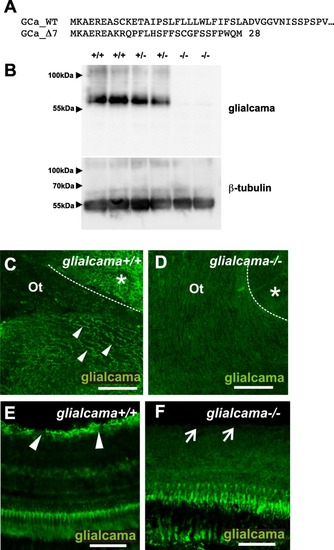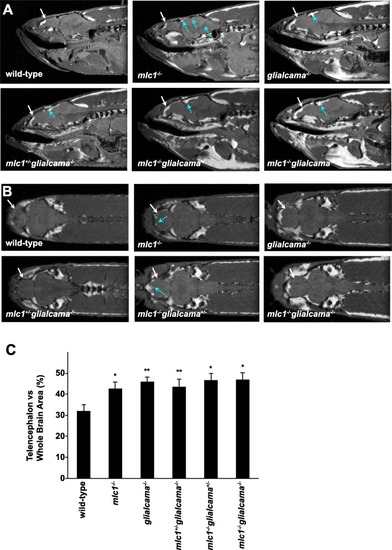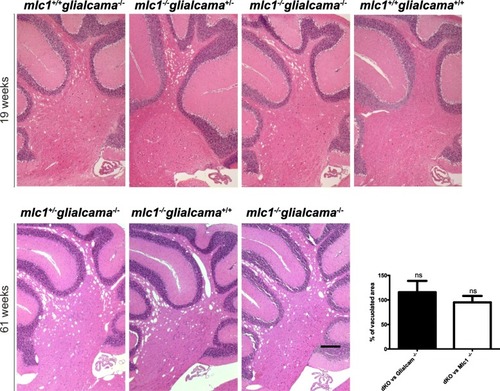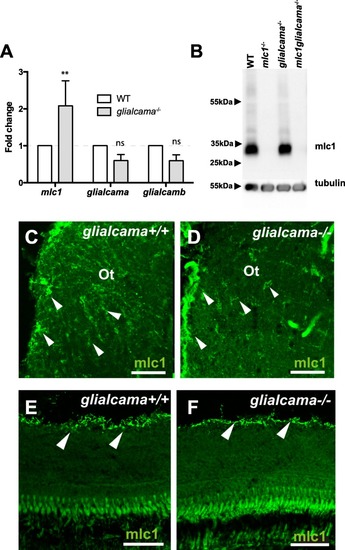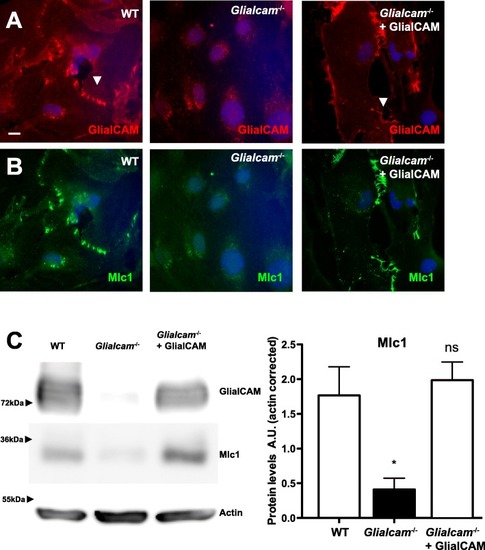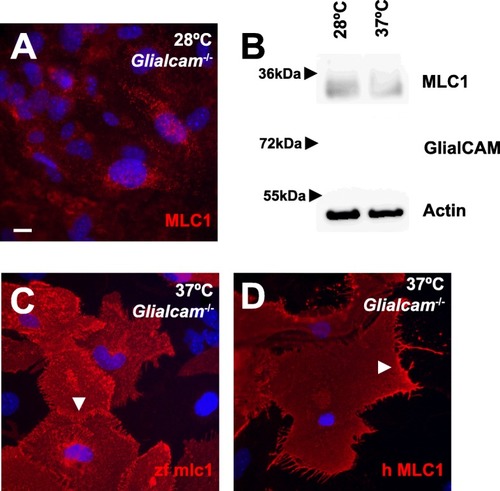- Title
-
Comparison of zebrafish and mice knockouts for Megalencephalic Leukoencephalopathy proteins indicates that GlialCAM/MLC1 forms a functional unit
- Authors
- Pérez-Rius, C., Folgueira, M., Elorza-Vidal, X., Alia, A., Hoegg-Beiler, M.B., Eeza, M.N.H., Díaz, M.L., Nunes, V., Barrallo-Gimeno, A., Estévez, R.
- Source
- Full text @ Orphanet J Rare Dis
|
Generation of a |
|
MR images of wild-type and various zebrafish mutants. PHENOTYPE:
|
|
Myelin vacuolization in |
|
mlc1 expression and localization in |
|
Mlc1 is mislocalized in primary |
|
zfmlc1 and hMLC1 overexpressed in primary |

ZFIN is incorporating published figure images and captions as part of an ongoing project. Figures from some publications have not yet been curated, or are not available for display because of copyright restrictions. PHENOTYPE:
|

